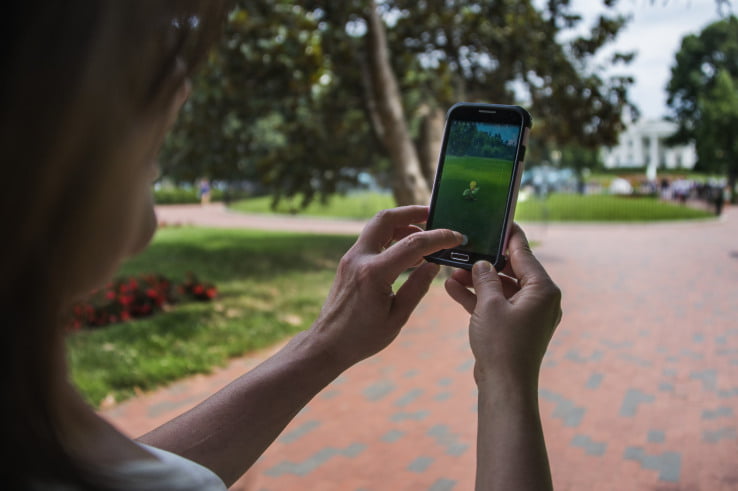
Pokémon Go has quickly become one of the most viral mobile applications of all time. The game is now the biggest ever in the U.S.; it has now topped Twitter’s daily users, and it sees people spending more time in its app than in Facebook, according to reports from various tracking firms.
An earlier report from SimilarWeb had pegged Pokémon Go as having surpassed dating app Tinder, in terms of installs, while it was closing in on Twitter’s daily active users. By Thursday, July 7th, the app had been installed on more Android smartphones than the dating app, the firm had said.
Today, SimilarWeb tells us that Pokémon Go did manage to surpass Twitter in terms of daily active users on Monday, and now sees 5.92 percent of the U.S. Android population engaging with the app on a daily basis.
The app is even seeing notable numbers of active users in countries where it hasn’t even been released yet, the company pointed out. (See chart below.) This is thanks to users locating then installing the Android APK file (the Android app, which can then be sideloaded onto your device).
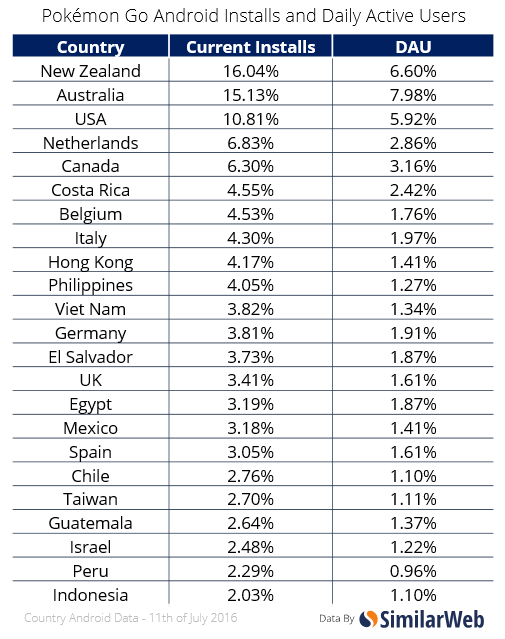
While the industry has seen the rapid rise of several other mobile games in recent years – including hits like Candy Crush, Clash Royale, Minecraft, and Slither.io, for example – a new report from SurveyMonkey Intelligence indicates that Pokémon Go has claimed the title of “biggest mobile game in U.S. history.”
This is based on Pokémon Go’s peak daily active users, the firm says.
On Monday, Pokémon Go saw just under 21 million daily active users in the U.S., topping Candy Crush’s rumored peak audience in 2013 as well as other top games like Draw Something, Clash Royale, and Slither.io, which hit their own peaks in various years.
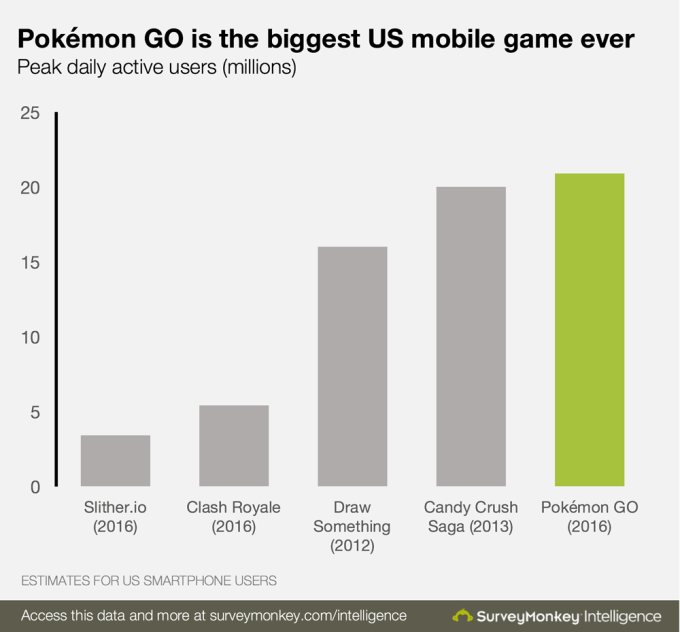
The report also noted that Pokémon Go is now closing in on Snapchat on Android, and the Pokémon Go Android application could even pass Google Maps on Android.
Users spend more minutes per day in Pokémon Go than Facebook
But active users is only one metric of gauging a game’s success. Thanks to the competitive nature of today’s app stores, it’s also important to track how long users actually engage with an application.
On this front, Pokémon Go is also breaking records. According to app store intelligence firm SensorTower, mobile users are now spending more time playing Pokémon Go than they are spending time in Facebook.
Facebook, of course, still counts far more mobile users – its corporate site claims 1.51 billion monthly active users, for example, versus Pokémon Go’s roughly 15 million mobile installs. (Not an apples-to-apples comparison, of course, but it gives you an idea.)
Also remarkable: tracking firm SimilarWeb says the game is installed on over 10 percent of Android devices in the U.S., and over 15 percent in its other markets, Australia and New Zealand. (See below chart.)
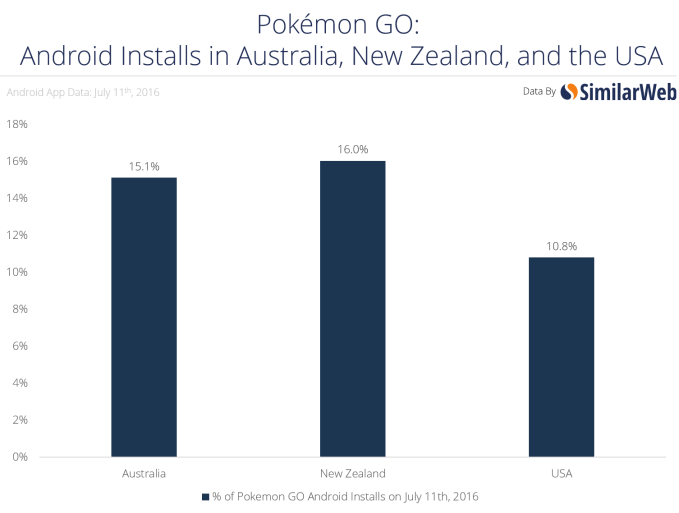
Meanwhile, on iOS, the average iPhone user spent 33 minutes in Pokémon Go on Monday, according to SensorTower’s data. That’s more than any other apps it analyzed, including Facebook, Snapchat, Twitter, Instagram, and Slither.io.
Facebook saw the second-most average usage, at 22 minutes, 8 seconds, the firm reported, and Snapchat saw 18 minutes. Twitter, Instagram, then Slither.io followed.

However, while SurveyMonkey’s data pointed to Pokémon Go being the biggest game in terms of active users, SensorTower noted that Pokémon Go is still beaten by others when it comes to time spent in games.
For instance, Game of War sees nearly 2 hours of total daily usage for the average user, while Candy Crush Saga, sees daily usage of about 43 minutes.
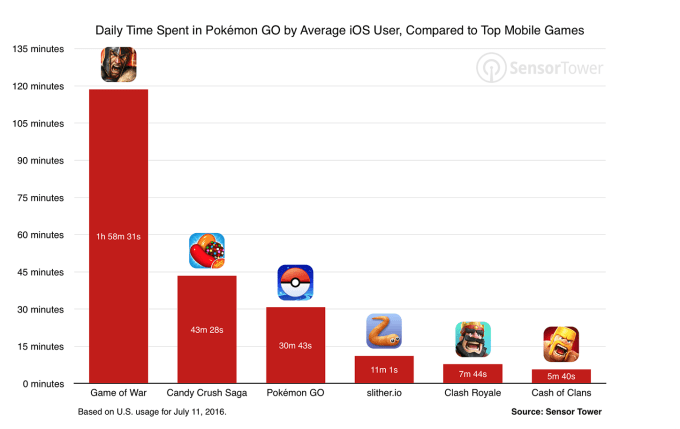
All this being said, the mobile gaming industry historically hasn’t always been kind to titles with tremendous hype, SurveyMonkey notes. Nintendo’s first mobile game, Miitomo,quickly turned into a ghost town, after early success that sent it to the top of the App Store.
Pokémon Go may be different, however. In addition to capitalizing on the Pokémon brand, the app has introduced brilliant gaming mechanics, in terms of keeping players active, engaged, returning and spending.
The only issue for the game in the foreseeable future is continuing to balance the needs of the hardcore gamers with the more casual ones. You can already see an issue in some denser markets, where the Pokémon gyms (where the Pokémon battle) are dominated by the game’s top players, making it difficult for casuals to engage. ButPokémon Go can easily overcome this challenge by implementing one-on-one battles and trading, which it is likely to do.
[Source:- Tech Crunch]

